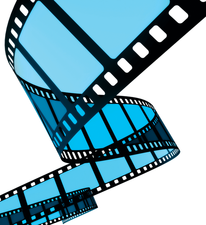Processing RAW files with RawTherapee
Digital Darkroom

© raven, Fotolia
RAW format images offer more options for editing than JPEG formats – RawTherapee brings this potential to Linux.
Just imagine the disappointment: When you get back from vacation and check your snapshots on your PC, you find out that your favorite image is color cast and the darker sections totally lack contrast. If you used the typical JPEG format, even the most capable image manipulation program would offer little help in restoring the shots. RAW format images, on the other hand, contain far more image data, which provides greater opportunity for post-processing (see the box titled "RAW Digital Negatives"). For example, you can correct underexposed images without affecting the quality of the original.
Camera manufacturers such as Canon and Nikon use proprietary RAW formats, and you typically need a commercial Windows program to open them. To avoid the Windows trap, try the freeware program RawTherapee [1] (Figure 1), which is based on DCraw [2]. RawTherapee can open nearly any RAW format, and it has a huge set of manipulation features. The project website [3] compares RawTherapee with other RAW converters. The program is also useful for editing JPEG- or PNG-formatted files.
In this article, I describe the stable version 2.3. A beta version of the 2.4 release is also available for download. Version 2.4 offers comprehensive metadata support (Exif and IPTC), that 2.3 lacks.
[...]
Buy this article as PDF
(incl. VAT)
Buy Linux Magazine
Subscribe to our Linux Newsletters
Find Linux and Open Source Jobs
Subscribe to our ADMIN Newsletters
Support Our Work
Linux Magazine content is made possible with support from readers like you. Please consider contributing when you’ve found an article to be beneficial.

News
-
Happy Birthday, ADMIN Magazine!
ADMIN is celebrating its 15th anniversary with issue #90.
-
Another Linux Malware Discovered
Russian hackers use Hyper-V to hide malware within Linux virtual machines.
-
TUXEDO Computers Announces a New InfinityBook
TUXEDO Computers is at it again with a new InfinityBook that will meet your professional and gaming needs.
-
SUSE Dives into the Agentic AI Pool
SUSE becomes the first open source company to adopt agentic AI with SUSE Enterprise Linux 16.
-
Linux Now Runs Most Windows Games
The latest data shows that nearly 90 percent of Windows games can be played on Linux.
-
Fedora 43 Has Finally Landed
The Fedora Linux developers have announced their latest release, Fedora 43.
-
KDE Unleashes Plasma 6.5
The Plasma 6.5 desktop environment is now available with new features, improvements, and the usual bug fixes.
-
Xubuntu Site Possibly Hacked
It appears that the Xubuntu site was hacked and briefly served up a malicious ZIP file from its download page.
-
LMDE 7 Now Available
Linux Mint Debian Edition, version 7, has been officially released and is based on upstream Debian.
-
Linux Kernel 6.16 Reaches EOL
Linux kernel 6.16 has reached its end of life, which means you'll need to upgrade to the next stable release, Linux kernel 6.17.

